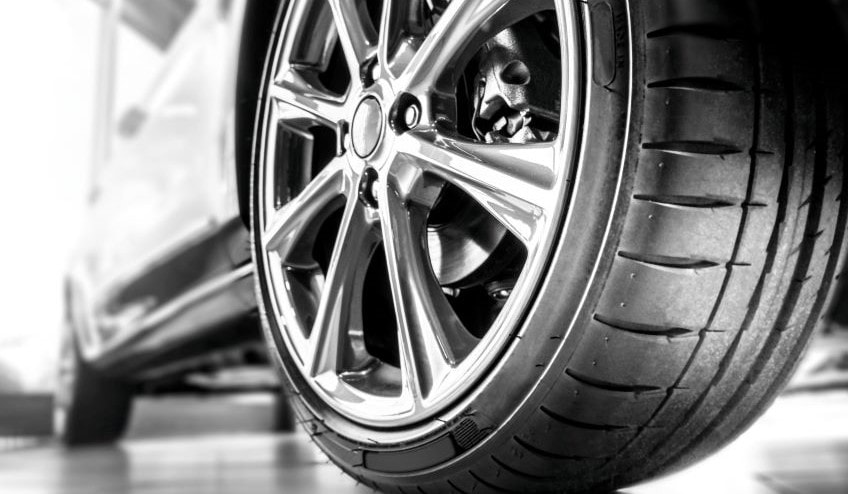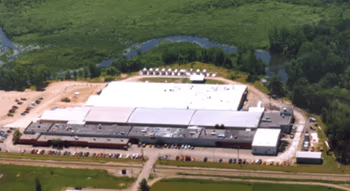
The Glue Talk Blog

COVID-19 has not been kind to the transportation industry. Tire Review magazine cites Smithers on the derailed growth in the tire industry, saying, “Considering the impact of COVID-19 on the global tires market, Smithers sees little recovery in 2020-2021, with real recovery starting in 2022 and 2019 tire volume not being reached again until 2023.”
Signs of recovery are already showing, however. Tire Review goes on to say surges of tire sales in Asia, home to the three largest tire markets globally, can help ease losses, and emerging technologies in the automotive industry will shape the opportunities to develop new tires in the evolving market.
Looking to the Road Ahead
Self-driving vehicles are helping to push the limits of what tire technology can be. The Wall Street Journal reports that Goodyear and Bridgestone are researching intelligent tires that aim to maximize the efficiency of autonomous vehicles.
Such intelligent tires have the potential to adapt to changing road and tire conditions instantly. The article states, “Recent experiments showed that self-driving vehicles using Goodyear’s intelligent tires can shorten the stopping distance lost by wear-and-tear on a tire by about 30%.” With such leaps in tire technology becoming possible, new innovations in materials for tires must develop at pace, but intelligent tires will make an appearance only further down the road.
Other developments in tire technology focus on sustainability and eco-friendly products. While this technology is new, increasing concerns about the environment may sway more tire manufacturers to go green and make tires with the environment in mind. To reduce climate footprint, providers look to new elastomer and polymer technologies that reduce weight, conserving gas usage.
The qualities of elastomers now developing build on the foundation of elastomer technology that already benefits the performance of vehicles, and research is ongoing to find the next best product to increase the value tire providers offer their customers.
Elastomers for More Reliable Tires
Use of elastomers in making tires works wonders to increase performance. The chemical systems in tire rubber benefit from intermediates that provide durability, flexibility, and reliable seals—qualities that elastomers deliver directly. And with the use of elastomers, the maintenance costs of tires reduce, and traction improves. Heat and cold resistance also improve, which in turn supports tire longevity and aids in maintaining proper inflation during changing temperatures.
The H.B. Fuller Difference
 At H.B. Fuller, we produce specialty butyl elastomers for tire applications by leveraging our dedicated butyl center of excellence, an R&D and production site staffed by about 220 employees and stretching across roughly 200,000 sq. ft. Capabilities like this facility are how we offer customized solutions to meet the growing demand for better materials as vehicle technology advances, and our current innovations lead in the industry.
At H.B. Fuller, we produce specialty butyl elastomers for tire applications by leveraging our dedicated butyl center of excellence, an R&D and production site staffed by about 220 employees and stretching across roughly 200,000 sq. ft. Capabilities like this facility are how we offer customized solutions to meet the growing demand for better materials as vehicle technology advances, and our current innovations lead in the industry.
- ISOLENE®: This liquid Polyisoprene rubber with no solvents has application in block copolymer-based pressure sensitive adhesives. It features the benefits of natural rubber without the darker color and impurities found in natural rubber.
- KALENE®: A liquid butyl rubber with no solvents, this elastomer is the base polymer and performance additive for moisture resistant coatings, marine and construction sealants, electrical encapsulants, and pressure sensitive adhesives. Available in two grades, this elastomer provides gas impermeability, chemical resistance, moisture resistance, good electrical properties, and excellent sound damping. Can be used as a curable plasticizer with Butyl and Halobutyl compounds in Tire Compounds to improve performance and life.
- KALAR®: This elastomer is a partially cross-linked butyl compound in convenient pellet form. Because it’s pelletized, handling and processing are easy. It has a great ability to maintain properties in compounds that make use of a high level of fillers and plasticizers. And excellent chemical resistance, moisture and gas impermeability, good electrical qualities, and aging resistance make it a good choice. It is also excellent at resisting creep and flow. Can used to formulate Tire Sealant used in Self Sealing Tires for Road Safety.
Work with Us to Produce Premium Products
Our team of professionals works with you to ensure the products you make perform exceptionally, finding the optimal formulation of elastomers for the best moisture and gas impermeability and resistance to aging and rubber degradation. Even with setbacks, like COVID-19, our robust supply chain ensures we can deliver the products you need without disruption as the tire industry recovers. Contact us to see what we can do together.
Blog Categories
Blog Categories
Archive
- 2024
- 2023
- 2022
-
2021
- January (3)
-
February (7)
- Celebrating Exceptional Service During COVID-19 Complications
- Cyanoacrylates: What They Are and What They Do
- Innovative two-shot bookbinding adhesive
- Make a Difference 2020
- Problem Solving: Paper Straws in Drinking Beverages
- Stronger straws sustainable future
- Substances of Interest in Disposable Absorbent Hygiene Products
- March (4)
- April (4)
- May (4)
- June (5)
- July (2)
- August (5)
- September (2)
- October (1)
- November (3)
- December (2)
-
2020
- January (4)
- February (2)
- March (3)
- April (4)
- May (3)
-
June (7)
- Community Support in the Era of Coronavirus
- HBFuller Employee Creates Face Shields with 3D Printer
- Improved Packaging Integrity and Greater Customer Satisfaction
- Liquid-Resistant Paper Straws
- What is a Sealant?
- What Is the Future of Commercial Disinfectants?
- Winning over consumers with e-commerce packaging solutions
-
July (6)
- Employees Take Action to be Part of Healing and Growth
- Gain a competitive advantage with packaging adhesive solutions
- HB Fuller Company Foundations Commitment to Communities
- Packaging Solutions for the South African Agriculture Market
- Supporting Organizations That Provide STEM Education for Youth
- Where Does Sustainability Stand Amid COVID-19
- August (3)
- September (2)
- October (4)
- November (2)
- December (4)
